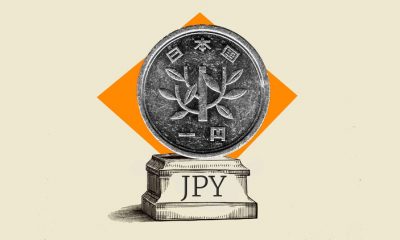

others
US Dollar rises ahead of Fed and May’s CPI figures – Crypto News
- USD sees continuous rise with keen eye toward FOMC meeting, prolonging its third consecutive day of gains.
- US economic outlook remains strong and investors await fresh economic forecasts from the FOMC.
- Markets anticipate hawkish tone on Wednesday’s Fed decision.
On Tuesday, the US Dollar Index (DXY) saw an upward trend toward the 105.36 area. The session won’t provide any highlights as cannons are pointing to Wednesday’s session.
The two-day Federal Open Market Committee (FOMC) meeting, which kicked off on Tuesday and will end on Wednesday, is eyed by market observers. Any changes to the interest rate outlook or guidance by Federal Reserve (Fed) members are bound to stir market movements. The outcome of the famous dot plot will also be closely watched.
Daily digest market movers: DXY gains further ground on quiet Tuesday, eyes on FOMC
- Updated dot plots will provide valuable insight. A single shift from three interest rate cuts to two by a Fed policymaker could potentially elevate the 2024 median from 4.625% to 4.875%.
- Markets expect a seemingly ‘hawkish hold’ from the Fed, keeping rates at 5.5%.
- Consequently, the odds of a September cut appear to be a 50:50 chance, and November cut odds stand at approximately 85%.
- US will also release inflation data on Wednesday. The core Consumer Price Index (CPI) for May is forecast to decelerate slightly to 3.5% YoY, while headline inflation is anticipated to remain steady at 3.4%.
DXY technical analysis: Fundamentals on Wednesday to stir trajectory
Indicators on the daily chart remain strong, and both the Relative Strength Index (RSI) and the Moving Average Convergence Divergence (MACD) jumped to positive terrain. Additionally, the Index recovered above the 20, 100, and 200-day Simple Moving Averages (SMA), which brightened the outlook for the short term.
Fundamental stimulus on Wednesday will dictate the pace of the next sessions, and markets should eye the 106.00 area in case the DXY faces bullish pressure. On the downside, the 104.50 area remains as a strong support.
Inflation FAQs
Inflation measures the rise in the price of a representative basket of goods and services. Headline inflation is usually expressed as a percentage change on a month-on-month (MoM) and year-on-year (YoY) basis. Core inflation excludes more volatile elements such as food and fuel which can fluctuate because of geopolitical and seasonal factors. Core inflation is the figure economists focus on and is the level targeted by central banks, which are mandated to keep inflation at a manageable level, usually around 2%.
The Consumer Price Index (CPI) measures the change in prices of a basket of goods and services over a period of time. It is usually expressed as a percentage change on a month-on-month (MoM) and year-on-year (YoY) basis. Core CPI is the figure targeted by central banks as it excludes volatile food and fuel inputs. When Core CPI rises above 2% it usually results in higher interest rates and vice versa when it falls below 2%. Since higher interest rates are positive for a currency, higher inflation usually results in a stronger currency. The opposite is true when inflation falls.
Although it may seem counter-intuitive, high inflation in a country pushes up the value of its currency and vice versa for lower inflation. This is because the central bank will normally raise interest rates to combat the higher inflation, which attract more global capital inflows from investors looking for a lucrative place to park their money.
Formerly, Gold was the asset investors turned to in times of high inflation because it preserved its value, and whilst investors will often still buy Gold for its safe-haven properties in times of extreme market turmoil, this is not the case most of the time. This is because when inflation is high, central banks will put up interest rates to combat it. Higher interest rates are negative for Gold because they increase the opportunity-cost of holding Gold vis-a-vis an interest-bearing asset or placing the money in a cash deposit account. On the flipside, lower inflation tends to be positive for Gold as it brings interest rates down, making the bright metal a more viable investment alternative.
-

 Blockchain5 days ago
Blockchain5 days agoInstitutional Demand Surges As Ethereum Sets New Inflow Records – Crypto News
-

 Blockchain5 days ago
Blockchain5 days agoDeFi Development Nears 1 Million Solana In Treasury – Crypto News
-
Business1 week ago
XLM Is More Bullish Than ETH, SOL, And XRP, Peter Brandt Declares – Crypto News
-

 Cryptocurrency1 week ago
Cryptocurrency1 week agoAnarchy, crime and stablecoins – Blockworks – Crypto News
-
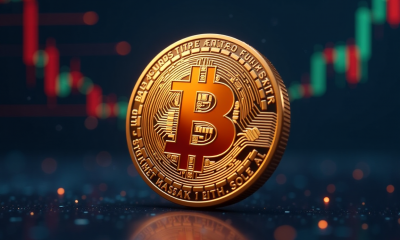
 Cryptocurrency1 week ago
Cryptocurrency1 week agoBitcoin trades near $119K after new all-time high; Coinbase rebrands wallet to ‘Base App’ – Crypto News
-
Technology1 week ago
“Decentralized Ponzi Scheme”- Gold Bug Peter Schiff Slams Landmark Crypto Bills – Crypto News
-
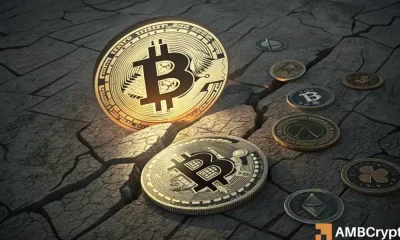
 Cryptocurrency7 days ago
Cryptocurrency7 days agoAltseason heats up, but Bitcoin could face short-term pullback – How? – Crypto News
-

 others1 week ago
others1 week agoVanEck Details Key Drivers Boosting Bitcoin Price, Including Corporate Treasury Demand, ETF Flows and More – Crypto News
-
Business1 week ago
XRP Lawsuit Update: Ripple Paid $125M in Cash, Settlement Hinges on Appeal – Crypto News
-

 De-fi1 week ago
De-fi1 week agoBNB Chain Teases New Blockchain with Privacy Features to Compete With Crypto Exchanges – Crypto News
-
Technology1 week ago
Breaking: GENIUS Act Becomes First Major Crypto Legislation as Trump Signs Bill – Crypto News
-

 De-fi1 week ago
De-fi1 week agoCrypto Market Cap Hits $4 Trillion Milestone as US House Passes Landmark Bills – Crypto News
-

 Cryptocurrency1 week ago
Cryptocurrency1 week agoCalifornia Sheriffs Believe 74-Year-Old’s Disappearance Linked to Son’s Crypto Fortune – Crypto News
-

 Cryptocurrency7 days ago
Cryptocurrency7 days agoShytoshi Kusama Breaks Silence on New SHIB AI Whitepaper and Transformed Future – Crypto News
-

 Cryptocurrency6 days ago
Cryptocurrency6 days agoSanctum acquires Ironforge, plots transaction infrastructure vertical – Crypto News
-
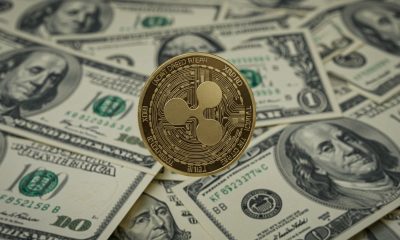
 Cryptocurrency6 days ago
Cryptocurrency6 days agoXRP Price Hits All-Time High at $3.66 — Can It Smash Through $4 After Trump Win & SEC Shake-Up? – Crypto News
-
Business1 week ago
CLARITY Bill Could Delay Over Last-Minute Push for Anti-CBDC Clause; Report – Crypto News
-
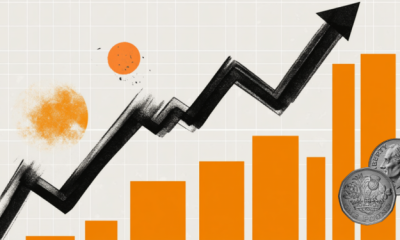
 others1 week ago
others1 week agoGBP/USD rallies on US PPI dip and Trump’s potential Powell removal – Crypto News
-

 others1 week ago
others1 week agoGBP/USD rallies on US PPI dip and Trump’s potential Powell removal – Crypto News
-

 Metaverse1 week ago
Metaverse1 week agoZoho Zia LLM launched with speech-to-text models and AI agent marketplace: All you need to know – Crypto News
-
Cryptocurrency1 week ago
Russia’s $85 Billion Sberbank to Launch Crypto Custody Services – Crypto News
-

 Technology1 week ago
Technology1 week agoEurope’s answer to ChatGPT? Mistral adds voice and research features to Le Chat AI – Crypto News
-

 De-fi1 week ago
De-fi1 week agoU.S. House Passes Clarity, GENIUS, and Anti-CBDC Acts With Historic Bipartisan Support for Crypto – Crypto News
-

 Technology1 week ago
Technology1 week agoMalicious code found in fake coding extensions used to steal crypto – Crypto News
-

 Cryptocurrency1 week ago
Cryptocurrency1 week agoXRP Price Spikes to Record Highs As Momentum Signals Extended Gains – Crypto News
-

 Technology1 week ago
Technology1 week agoMeta’s AI Studio: Red flag or red herring? – Crypto News
-

 Blockchain1 week ago
Blockchain1 week agoWhy Bitcoin self-custody is declining in the ETF era – Crypto News
-

 Cryptocurrency1 week ago
Cryptocurrency1 week agoUS House passes three key crypto bills; market reaction muted as Bitcoin dips – Crypto News
-

 De-fi1 week ago
De-fi1 week agoCrypto Market Cap Hits $4 Trillion Milestone as US House Passes Landmark Bills – Crypto News
-

 Cryptocurrency6 days ago
Cryptocurrency6 days agoArthur Hayes-linked wallet bags $2M worth of AAVE and LDO in an OTC deal – Crypto News
-
others6 days ago
Why Is The Crypto Market Rising Today? – Crypto News
-
Business5 days ago
Vitalik Buterin Approves Gas Limit Hike, Warns Against Risky Ethereum Scaling – Crypto News
-

 Blockchain5 days ago
Blockchain5 days agoHow to Use Google Gemini to Turn Crypto News Into Trade Signals – Crypto News
-
others5 days ago
Breaking: Polymarket Reenters US Market With Exchange Acquisition As Probe Ends – Crypto News
-

 Blockchain5 days ago
Blockchain5 days agoStrategy to keep STRC Fund Pegged to $100 – Crypto News
-

 Blockchain4 days ago
Blockchain4 days agoXRP Could Skyrocket 500% Against Bitcoin, Analyst Warns – Crypto News
-

 De-fi1 week ago
De-fi1 week agoU.S. Marshals Peg Federal Bitcoin Holdings at 28,988 Tokens Worth $3.4 B – Crypto News
-

 Blockchain1 week ago
Blockchain1 week agoNasdaq Exchange Files SEC Form to List Staking Ethereum ETF – Crypto News
-
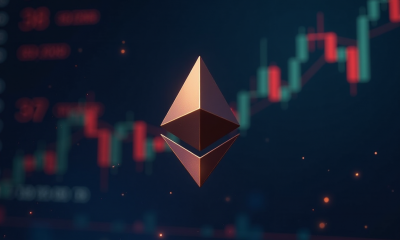
 Cryptocurrency1 week ago
Cryptocurrency1 week agoEthereum price surges 6% to $2,800 as shorts suffer amid $500M crypto liquidation – Crypto News
-

 Cryptocurrency1 week ago
Cryptocurrency1 week agoFriday charts: Fiscal dominance and super intelligence – Crypto News
-

 De-fi1 week ago
De-fi1 week agoTrump’s Crypto Assets Now Comprise a Key Part of Family Fortune Worth Billions – Crypto News
-
Business7 days ago
Pi Coin Price Technical Analysis Confirms Buy Signal Despite 2M Exchange Inflows – Crypto News
-

 Technology7 days ago
Technology7 days agoNot Google or Bing! This search engine lets you block AI images in search results – Crypto News
-
Cryptocurrency7 days ago
GENIUS Act Is The Catalyst For XRP And RLUSD’s Dominance, Expert Declares – Crypto News
-

 De-fi6 days ago
De-fi6 days agoNasdaq Files to Add Staking to BlackRock’s ETH ETF – Crypto News
-

 Cryptocurrency5 days ago
Cryptocurrency5 days agoEthereum Shatters Inflow Records, Pulls in $2.12 Billion in a Week – Crypto News
-

 Cryptocurrency5 days ago
Cryptocurrency5 days agoSolana Clinches 5-Month High, Where to From Here? – Crypto News
-

 Technology4 days ago
Technology4 days agoGrab up to 43% off on best selling premium laptops from Apple, Asus and more – Crypto News
-

 Blockchain4 days ago
Blockchain4 days agoCrypto Needs Minimum Viable Decentralization – Crypto News
-

 Blockchain1 week ago
Blockchain1 week agoTON’s Next Stop Could Be $3.50, Here’s Why – Crypto News

